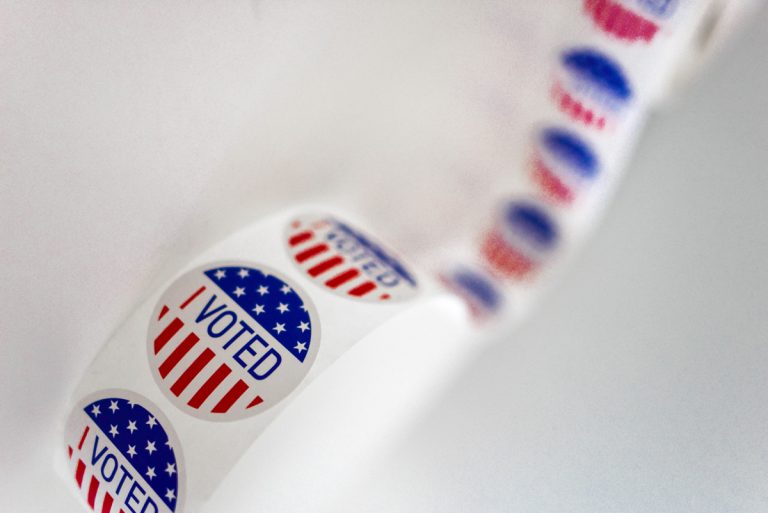US election 2020 update: Who will win and what will happen afterwards?
Even with the majority of votes already in and a possible outcome resolving in the offing, there is no end in sight to the drama surrounding America’s presidential election. So where do we stand?
Biden is within reach of 270 electoral votes
As of Friday morning, Democrat Joseph R. Biden has secured 253 out of the 270 electoral votes he needs in order to win the presidency. As expected, the race now hinges on results coming in from a handful of states that will decide the outcome in the election: Arizona, Georgia, Nevada, North Carolina, and Pennsylvania. In all of these states, the gap between the candidates in razor-thin, and a mere few thousand votes could determine who gets to occupy the Oval Office.
As of this reporting, Biden has maintained his lead in Nevada and Arizona, although his advantage in the latter has shrunk as more mail-in ballots were counted. Yet, with the exception of Arizona, the majority of mail-in ballots (which in Pennsylvania and some Georgia counties are counted later in the process) favour Biden. This explains his sudden lead in both Pennsylvania and traditionally-Republican Georgia, where a Democrat has not been elected for president since Bill Clinton in 1992. Biden’s edge in all of these states grants him more than one path to 270, and dims Trump’s prospects for re-election.
Facing a potential loss, Trump declares election a “fraud”
As Biden inched his way closer to the presidency over the last few days, President Trump, backed by his inner circle and avid supporters, has ratcheted up his baseless claims that a grand conspiracy to overthrow him is taking place and that the electoral process in states where he’s projected to lose (or has already lost) is fraudulent. Are we surprised?
Trump’s attack on the elections began months ago, as he proclaimed, without a shred of evidence, that mail-in ballots (which are being used primarily by Democrats as a precaution against COVID-19) are being tampered with in order to fraudulently elect Biden. Trump and his allies are now calling out states where votes that were mailed out up until Election Day but received a few days later due to COVID-19 related delays in the Post Office were still counted. While under the US Constitution each state has the right to determine its own election process and deadline for accepting ballots, the president nonetheless declared these votes illegal and called for the counting to stop (except for in Arizona, where mail-in ballots that arrived late proved to lean Republican).
On the day after the election, Trump prematurely declared victory on Twitter and claimed that the election is being stolen from him. Such sentiments were echoed by some of his closest allies and family members. This has sparked a wave of protests by Trump supporters across the country who now believe that a Trump defeat could only result from fraud. In a tweet posted Thursday, President Trump’s son, Donald Jr., called for his dad to go “to total war” over the election results. In a speech from the White House earlier this week, Trump indicated that he will not concede, and will seek intervention from the courts.
As of now, few Republican leaders came out in support of Trump’s allegations, but that could change should they feel that a significant enough portion of the public in their districts supports the narrative promulgated by Trump.
Could the Supreme Court decide the election?
Trump has filed multiple lawsuits in states where he lost his advantage over Biden. In most of these cases, Trump seeks to challenge the validity of mail-in ballots that arrived after 3 November, as well as some paltry technicalities that he seeks to present as indicative of fraudulent or illegal practices favouring Biden.
Of all the lawsuits filed by the Trump campaign, the one concerning Pennsylvania could make its way up to the Supreme Court in the coming days or weeks. In this particular case, Trump is joining Pennsylvania Republican lawmakers in attacking a decision by the Supreme Court of the State of Pennsylvania to extend the deadline for accepting mail-in ballots sent out before Election Day by three days. The plaintiffs claim that the Court overstepped its authority by intervening in the electoral process, which falls within the jurisdiction of the state’s legislative branch.
The case was already brought before the Supreme Court prior to the elections, but ended in a 4-4 tie, with the Chief Justice siding with the Court’s liberal wing in rejecting Republicans’ claims. Now, with the addition of Amy Coney Barret to the bench, Pennsylvania Republicans and Trump may just procure the missing vote they need, should the case be heard again.
While the Supreme Court is not endowed with the ability to install presidents, it can, as it did in Florida in 2000 with Bush versus Gore, determine that state courts encroached on the legislative branch in their rulings concerning elections and effectively invalidate the results influenced by the former’s intervention. In the case of Pennsylvania, the Supreme Court could rule that the state’s Supreme Court had no authority to extend the deadline to accept ballots and thus potentially disqualify thousands upon thousands of votes. Should the election hinge solely on the commonwealth of Pennsylvania, such a decision by the Supreme Court could change the outcome of the election and usher in four more years of Trump.
The Court is currently deliberating on whether or not to hear the case.





